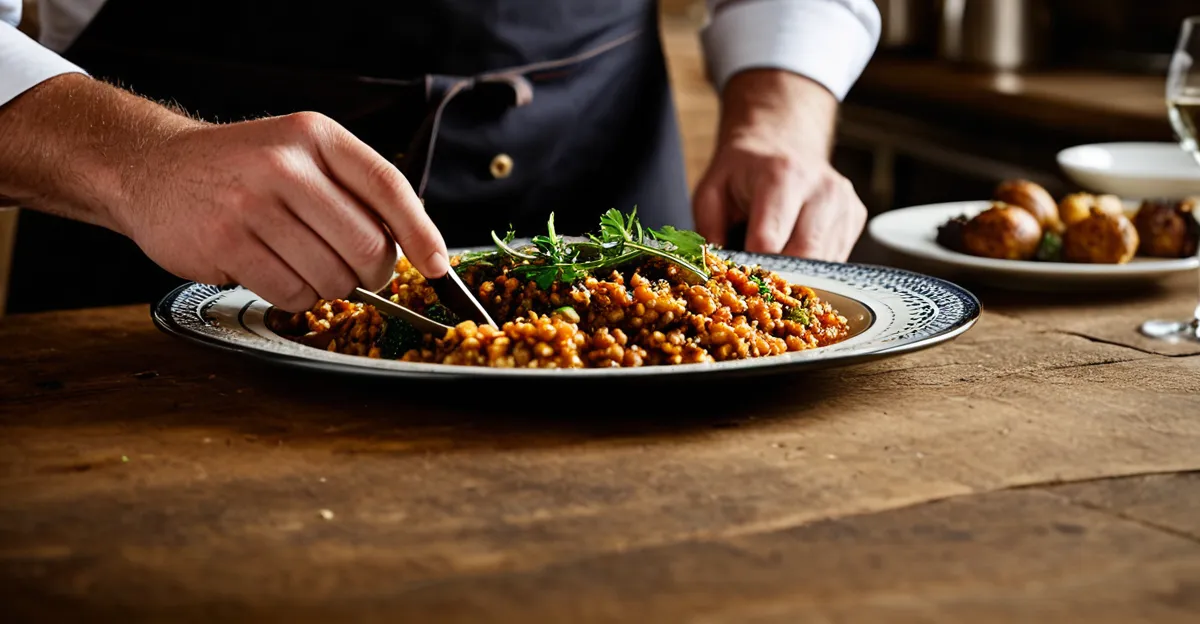The Foundations of UK Culinary Heritage
Understanding UK food history reveals a rich tapestry shaped by centuries of change. From the medieval period to the Industrial Revolution, these eras influenced staple ingredients such as root vegetables, meats, and grains, which remain central in British kitchens today. The culinary heritage of the UK also reflects resourcefulness, with cooking methods like slow roasting, braising, and pickling emerging to maximize flavour and preservation.
Key traditional dishes like roast beef with Yorkshire pudding, Cornish pasties, and haggis have endured because they combine local ingredients with techniques honed over generations. These dishes not only represent culinary staples but also culturally significant markers within regions.
Also read : How Can Modern Techniques Revolutionize Traditional UK Cooking?
Regional influences are essential to the broader picture of British cuisine. For example, Scottish, Welsh, and Northern Irish food cultures contribute rare ingredients and distinct preparation styles — from Scottish smoked salmon to Welsh rarebit. Recognizing these regional differences enriches our appreciation of UK food history and highlights how traditional British cuisine has evolved into a diverse and still vibrant culinary landscape.
Reviving and Reinventing Historical Dishes
Exploring modern British cuisine involves a delicate balancing act: preserving the essence of traditional British cuisine while appealing to contemporary palates. Chefs achieve this by reinterpreting classics using innovative techniques, often lightening rich recipes or introducing new textures to age-old staples. For instance, slow-braising remains a beloved method, but it is sometimes paired with sous-vide precision to enhance tenderness and flavour.
In parallel : What are the secrets to preparing a delicious spotted dick pudding?
Fusion plays a critical role in this culinary innovation in the UK. The reinterpretation of classics frequently incorporates international spices, herbs, or presentation styles. This approach respects the foundations of UK food history while allowing dishes to evolve organically. Imagine a Cornish pasty filled with exotic, globally inspired butternut squash and spiced lamb—a perfect example of this fusion.
Leading UK restaurants showcase these ideas boldly. Through chef-led projects, dishes once confined to family tables gain fresh life on menus, highlighting how chefs blend culinary innovation UK with heritage. The result? A vibrant dialogue between past and present cooking practices that maintains relevance and drives the forward momentum of British gastronomy today.
Practical Applications in Today’s Home and Professional Kitchens
Bridging the gap between UK cooking methods and modern kitchens enriches both home cooks and professionals. Incorporating traditional British flavours today means embracing techniques that have stood the test of time—such as slow roasting, braising, and pickling—which maximise taste and texture without complexity. These methods often use simple, seasonal ingredients familiar to UK food history but presented in ways that suit contemporary lifestyles.
For example, slow roasting a joint of meat not only enhances the depth of flavour but requires minimal active cooking time, ideal for busy home cooks. Professionals, meanwhile, may combine classic techniques with modern equipment, like sous-vide, to control temperature and tenderness precisely, advancing culinary innovation UK.
Suggested ingredients to keep these traditions alive include root vegetables (parsnips, turnips), game meats, and local cheeses—each deeply embedded in traditional British cuisine and offering robust flavours.
Visual inspirations often come from culinary heritage cookbooks or chef demonstrations that highlight how historic British dishes can be practically adapted today. Whether crafting a weeknight dinner or a restaurant menu, these tried-and-true practices ensure that British flavours today remain vibrant and accessible, connecting present-day cooking with its rich historical roots.
Case Studies: Modern Chefs Drawing on Tradition
Modern UK chefs are increasingly embracing traditional influence modern cooking, using historic recipes as a foundation for innovative menus. Chef interviews UK reveal a shared respect for UK food history, which they see as a rich source of inspiration rather than constraint. Many chefs emphasize preserving the authentic flavours found in traditional British cuisine while elevating presentation and technique to meet contemporary standards.
Notable restaurant trends UK include revisiting local, seasonal ingredients long treasured in British culinary heritage—such as game meats and root vegetables—and transforming them with modern methods. For example, some chefs incorporate sous-vide or fermenting alongside age-old slow roasting, balancing culinary heritage with precision cooking.
Leading establishments often showcase a thoughtful reinterpretation of classic dishes, evident in seasonal tasting menus that blend heritage with innovation. These menus demonstrate how chef interviews UK uncover the importance of storytelling through food, connecting diners with the past. This approach not only revitalizes regional traditions but also strengthens the relevance of traditional British cuisine in modern UK gastronomy.






